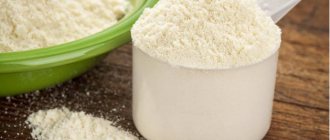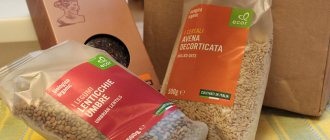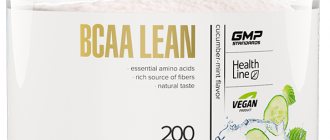The issue of low-calorie alcohol usually worries the female half of society, since it is women who, in order to attract the attention of others, are obliged to monitor their figure and count the number of calories. This article was prepared exclusively for women and girls who are concerned about their appearance and waist measurements.
Everyone knows the fact that alcohol is a high-calorie product, which, combined with overeating at a party or feast, can add several kilograms. Unfortunately, there is bad news for cocktail drinkers: when mixing several spirits with sweet syrups, the number of calories in one glass can exceed 800 kcal! What if several glasses were drunk and, in addition, with dessert?
Can you imagine how many calories can be accumulated in one evening? So that all these thoughts about your figure don’t torment you, read below about the calorie content of each type of alcohol, so you can find out which alcoholic drinks are better not to combine with fatty or sweet foods, and which ones are completely harmless to your appearance.
Tequila with fresh lime juice
Number of calories: less than 200
The margarita feels indulgent for a reason—this standard mixed drink is packed with calories and sugar. "A margarita can contain anywhere from 160 to 400 calories depending on whether it's made with fresh juice or pre-mixed syrup—most margarita mixes are high in sugar and calories," says Yasi Ansari, RD, a registered dietitian in Los Angeles, NY. California.
For a lower-calorie, Mexican-style cocktail, Ansari recommends drinking tequila with a squeeze of fresh lime juice (the lowest-calorie option) or a Paloma. "It's mixed with juice rather than syrup, keeping calories under 200," she says. Using fresh juice instead of a sugary concoction will also help you drink it more slowly and enjoy the flavor. To add a little no-calorie fizz to the mix, try sparkling water or seltzer.
Soda with vodka and lemon
Number of calories: 96
If you love the sweetness cranberry juice adds to your drinks, you'll love this lightened-up version that gets extra tart flavor from lemons. Just be sure to stay away from tonic water. "It adds about 80 calories and 21 grams of sugar" to your shake, Ansari says. Instead, choose soda water or seltzer. “It's much better to mix a shot of vodka with sparkling water, which is still fizzy but contains no calories,” she explains. To enhance the flavor without adding calories, squeeze in some fresh lemon juice for a refreshing hit.
Since alcohol tends to dehydrate you, using soda water is a bonus. "The great thing about soda water, besides the fact that it doesn't add calories, is that it keeps you hydrated," says Ansari. Whenever you drink, be sure to take sips of water between sips.
Mojito without syrup
Number of calories: less than 100
A mojito typically contains about 168 calories, but Ansari says skipping the simple syrup can save you between 40 and 70 calories per cocktail. “You can make this drink under 100 calories by making it with light rum and a teaspoon of sugar (or without a calorie-dense sugar substitute like stevia),” she explains. Adding a ton of mint, increasing the amount of soda water, and packing fresh lime juice also enhances the flavor without increasing the calories. At a bar, simply ask the bartender to skip the syrup and add more mint and lime juice.
Light Bloody Mary
Number of calories: less than 100
For the lowest-calorie brunch cocktails, avoid the jug of mimosa, which can be high in sugar, due to the fruit juices. Bloody Mary is a healthier option, but to keep the calories low, Ansari suggests mixing it yourself. Pre-mixed or packaged versions can range from 200 to 400 calories.
"You can keep Bloody Mary recipes at or below 100 calories by combining one ounce of vodka with a smaller portion of fresh tomato juice and adding only a dash of Worcestershire and Tabasco sauce," she says. This keeps the sodium low while imparting flavor. Don't be afraid to use heat infusion spices either—a little goes a long way. Avoid loading your drink with too many olives or bacon bits and stick to celery sticks or cherry tomatoes.
Light beer
Number of calories: 103
Not all beer will give you a belly. Light beers typically contain about 50 fewer calories than regular beers. “While this may not seem like a big deal, it happens when you pair a glass of beer with dinner,” says Ansari. “Adding unnecessary calories from liquids can prevent you from achieving your desired health goals.”
In general, the lighter the beer, the better, Moskowitz says. “Generally, the darker the beer, the more calories it contains,” she explains. In other words, stick to saisons, wheats and sours over stouts whenever possible.
What is the lowest calorie alcohol: list of drinks
Not everyone can afford to give up alcohol.
Of course, there is significant merit in this, but not many have the will to cope with urban stress. That's why you continue to drink periodically.
But how can you be able to drink and still stick to a diet? In fact, no diet advises you to drink even minimal amounts, but there are drinks that contain few calories.
List of low-calorie alcoholic drinks
As you know, in order to lose weight you need to use a simple scheme: we consume less calories - we spend more. It is necessary that in the end every day you receive less calories than you spend. That is why they count calories from food and calories burned during training and during the day.
If you want to drink, then focus on low-calorie alcohol.
Here is a list of the most “diet” and not the most “diet” alcoholic drinks.
- Light beer . We are talking specifically about a light type of beer, the so-called lager, which is, for example, a classic type of English pub. 100 grams of light beer contains 60 kcal and this parameter is the minimum of all drinks, but here you need to take into account the amount of drink consumed. As a rule, much more than 100 grams of beer is drunk, and accordingly, the calorie content increases.
- Dry and semi-dry wine. Contains 10 kcal more than beer, that is, for every 100 grams only 70 kcal. At the same time, many people know about the beneficial properties of dry wine; it does not contain as much sugar as semi-sweet wine, and many doctors even sometimes recommend this drink in moderate doses. When compared with beer, high-quality dry wine looks even more beneficial in relation to dietary consumption, although it is slightly higher in calories. By the way, semi-dry wine is still a little more caloric and has 78 kcal for every hundred grams of product.
- Champagne. Most often we are talking about 85 kcal. Therefore, a small glass will not burden your body with excessive calories, although the presence of bubbles in this drink does not always have a positive effect on digestion and, as a result, on the diet. Only such a low calorie content is found in semi-dry champagne; if you take sweet or semi-sweet, the calorie content is higher and can reach 120 kcal.
- Semi-sweet and sweet wine. Contains about 90-100 kcal for every hundred grams of product. However, here you need to clarify this parameter on the packaging.
- Dark beer. Less high-calorie varieties may contain 100-120 kcal per 100 grams, but any such drinks contain a lot of carbohydrates, which in turn retain water in the body and make the body gain weight.
- Strong alcohol: whiskey, cognac and the like. One stack (50 grams) contains about 120-130 kcal, but it may be more. If the degree in the drink is more than 40, then this parameter increases significantly.
When you choose between these drinks, you need to understand that this data is not always as clear as indicated in the list, especially when it comes to drinks such as wine or champagne, where the recipe may vary. For example, there are well-known varieties of semi-sweet wine:
- Zinfandel – 80 kcal per hundred grams of product;
- Chardonnay - 87 kcal per hundred grams of product.
Another typical example is port, which is technically a type of sweet red wine. Only there is more alcohol and, accordingly, calories. For example, Ruby Port contains as much as 190 kilos of calories for every hundred grams.
The situation is similar with dark and craft beers, where calorie content also often varies. There are incredibly “thick” varieties, for example:
- Anchor Porter – 210 kilocalories per hundred grams;
- McEwans Scottish Ale – 290 kilocalories per hundred grams.
Therefore, always choose the product you want to drink wisely.
How to drink alcohol with a minimum of harm to your figure and health
To do this, it is better not to drink at all, and often this is the optimal solution. If you continue to drink, the first advice is, of course, rationing. It helps to minimize both health harm and the amount of calories consumed.
In addition, you need to imagine how alcohol acts after consumption. Any drink begins to be absorbed into your body. Moreover, absorption begins from the oral cavity.
Therefore, even after rinsing your mouth repeatedly with something strong, you can get drunk. After the oral cavity, alcohol continues to be broken down in both the stomach and intestines, and the rest of the food (if any) is practically not processed.
Remember - alcohol slows down the processes of digestion and breakdown of food, including reducing the activity of fat breakdown.
- Digestion. Before drinking alcohol (for example, at a party), start your digestion with a couple of glasses of warm water. Next, while drinking, do not neglect snacks; it is better to choose something like lean meat. Drinking on an empty stomach is only worse for your figure and health.
- Quantity. Don’t drink to the bottom; determine the minimum dose for yourself for the entire period of the feast. In addition, look at the number of degrees and calories. Choose drinks that are less alcoholic and lower in calories.
- If you prefer to drink periodically, then choose something like dry red wine and stretch out the glass throughout the evening. You can also afford a glass of high-quality light beer, but you will then need to work off these 300 kcal in the gym or not jogging. It is quite possible to limit yourself to a dose of 25 grams of strong drink at lunch, so you can activate digestion and not gain extra calories.
Champagne
Calorie count: 90-96 calories
Brut or extra-brut champagne means “dry”, so it naturally has less sugar. Sparkling wines are usually very acidic, so a little sugar is added to balance the flavor. Generally speaking, extra brut champagne has 0.6 percent residual sugar per liter, compared to Demi Sec, which has 3.3-5 percent. So if you're looking to order something sparkling and slightly sweet to sip on, then the Flute of Extra Brut Champagne is the way to go.
Is alcohol paired with snacks or vice versa?
Eugene:
Enogastronomy is a fairly fashionable trend in venerable wine projects. Wine and food pairings have been incredibly popular lately. Sommeliers and chefs, side by side, create clever pairings for wine dinners or conceive sets when several glasses of different wines are served with a dish. So that the guest has the opportunity to compare how wine and food can provide extremely different tastes.
Ivan Sablin
head bartender at Klava Bar
As a teetotaler, I will say that alcohol is not the basis of the table. Of course, it’s worth choosing alcohol for snacks, making a set meal, and choosing a set of alcohol for each course. No one forces you to buy one wine and set the entire table with it.
Photo: istockphoto.com
You need to choose alcohol for an aperitif - sparkling, for example. Then continue with still wine: white, or maybe red. You can finish with strong alcohol or cocktails based on strong alcohol, maybe with sours. Or if the wine lover is a sophisticated one, some more interesting cocktails made from vermouths, liqueurs, bitters, etc.
Diet gin and tonic
Number of calories: 120
If you can't part with tonic water, keep calories low with your diet choices. "Regular tonic water is high in sugar and calories, but you can cut at least 60 calories by choosing a diet tonic water and a splash of regular tonic water," says Ansari. You can also replace it with sparkling water. Get creative with your garnishes by sprinkling them with a sprig of fresh rosemary or a slice of grapefruit to add extra flavor. The presentation and taste will keep you satisfied.
Kombucha with vodka
Calories: 90
Kombucha has become a popular fermented health drink due to its high probiotic content. Kombucha is usually made with tea and sweetened with sugar, which is eaten by Scobies, a starter bacteria. Since it's a fizzy, flavored drink that boasts some gut-healthy benefits, it makes a great mixer with an ounce of vodka. Just be mindful of the sugar in kombucha and stick to low-sugar varieties. Some store-bought kombucha drinks also have two servings, so be sure to stick to just one.
Finally about wine diets
Of course, the calorie content of some alcoholic products is not a myth. However, when used wisely, alcohol becomes not a potential enemy, but a real ally in the fight for a slim body.
Thus, nutritionists have been developing different types of diets that include drinking alcohol for about 20 years. The most classic example is the French wine diet. It has a beneficial effect on the digestive tract, allows you to maintain a proper nutritional system and has a positive effect on the emotional background of a person losing weight.
Drink alcohol correctly, not forgetting about aesthetics and moderation. In this case, shopping at the WineStreet store will only bring satisfaction, and worries about your figure will completely disappear!
Sea breeze
Calories: ~165
If you're in the mood for a fruity drink, step up to this lite version of Sea Breeze. Bonnie Taub-Dix, R.D.N., creator of BetterThanDieting.com and author of the book, read it before eating it, likes to mix vodka with a little grapefruit juice and a splash of cranberry juice. "I especially like to make this drink with pink grapefruit juice, which is about 45 calories per half cup, a splash of cranberry juice, which adds another 20 calories, and vodka, which is about 100 calories per 1.5 ounces," she says.
How to reduce the caloric content of alcohol consumed
We have already written that professional sports and alcoholic beverages are incompatible.
Alcohol and weight loss - in general, too. The reason is the high calorie content of alcohol.
Many do not pay attention to this, and in vain. We will see this now.
| Alcohol | Calorie content per 100 ml, kcal |
| Non-alcoholic beer | 25 – 37 |
| Beer (from 1.8 to 4.5%) | 29 – 45 |
| Alcoholic cocktail "Mojito" | 52 |
| Wine (10 to 12.5%) | 66 – 78 |
| Dry white wine, 12% | 66 |
| Red wine, 12% | 76 |
| White wine, 12% | 78 |
| Sweet white wine, 13.5% | 98 |
| Champagne | 55 – 90 |
| Champagne Brut | 55 |
| Dry champagne | 85 |
| Champagne semi-sweet (12%) | 88 |
| Champagne sweet | 90 |
| Fortified wines (sherry, Madeira, sherry, vermouth, port) from 7.5 to 20% | 80 – 167 |
| Martini Asti, 7.5% | 80 |
| Martini Bianco sweet white, 15% | 145 |
| Martini Rosso, 15% | 145 |
| Port wine | 167 |
| Strong drinks (whisky, tequila, rum, vodka, gin, schnapps, cognac, brandy and others), 40% | 200 – 240 |
| Absinthe | 171 |
| Schnapps | 200 |
| Rum | 217 |
| Whiskey | 222 |
| Gin | 223 |
| Brandy | 225 |
| Chacha | 225 |
| Tequila | 231 |
| Vodka | 234 |
| Bourbon | 235 |
| Cognac | 240 |
| Jägermeister liqueur, 35% | 250 |
| Punch, 26% | 260 |
| Becherovka with herbs, 38% | 305 |
| Calvados (40%) | 325 |
| Liqueurs (24% strength) | 345 |
What alcohol is low-calorie?
The lowest calorie alcohol is beer, but who consumes it in milliliters?! This is the danger. We drink a bottle or two, eating highly nutritious nuts - and in the end we consume half the daily value. The calorie content of beer (in a two-liter container) can reach up to 800 kcal.
The second drink on the list is wine, preferably dry. This is perhaps the only alcohol on the diet that is occasionally allowed (no more than one glass, about 200 mm).
Carbonated champagne, although not superior to wine in terms of calories, is not recommended for weight loss, especially when cutting.
To reduce the calorie content of alcoholic drinks:
- reduce the serving size. If it's beer, try limiting yourself to a 0.3 bottle instead of a 0.5 bottle. Appetizers: seafood, low-fat cheese, rolls and sushi (a little). Calorie content of rolls and sushi here. We exclude seeds, crackers, potato chips and other snacks;
- dry wine can be drunk diluted with water, fortified - used like cognac - in very small quantities and without snacks;
- Remember that alcohol whets your appetite. Therefore, control yourself all the time, do not overeat; drink as slowly as possible, in small sips;
- try to drink drinks with a high content of tannins, which reduce the rate of absorption of alcohol (red wine, whiskey, cognac);
- It is better to snack on strong drinks, but correctly: meat dishes slow down the absorption rate, while fruits and carbonated drinks, on the contrary, increase them. It is better not to use them with alcohol.
A clear answer to the question of whether drinking alcohol on a diet is acceptable has not yet been given - in each individual case, the compatibility of weight loss and alcohol must be considered individually.
Taking into account the minimum daily calorie intake, it is still possible to include a couple of servings of alcohol in the menu without going beyond the daily calorie intake.
The main thing is to pay attention to the calorie content of drinks and not get carried away with snacks. Example of one serving: 0.33 weak beer, 200 ml of wine or 25 ml of cognac. Girls – 1 – 2 servings. Men are allowed to consume no more than 4 such servings. https://simpleslim.ru
Martini
Calories: ~128
When you want a simple, low-calorie cocktail, you can't go wrong with a classic martini. To save calories, Keri Gans, MS, RDN, author of The Small Change Diet, skips using vermouth and drinks it straight with olives—and she sticks to just one glass.
— Vodka has about 64 calories per serving, and most martinis have two to three servings, depending on the size of the glass. At home I try to keep my glass smaller. Plus, olives are rich in heart-healthy monounsaturated fats, which must explain something! she adds.
Your Narcologist recommends: note
Red wine in the amount of one glass not only does not harm the figure, but also has a good effect on the body:
- cleanses blood vessels from cholesterol plaques;
- improves blood circulation;
- normalizes intravenous pressure;
- expands the lumens of blood vessels.
Red wine is slowly absorbed into the circulatory system. It is often used for medicinal purposes.










